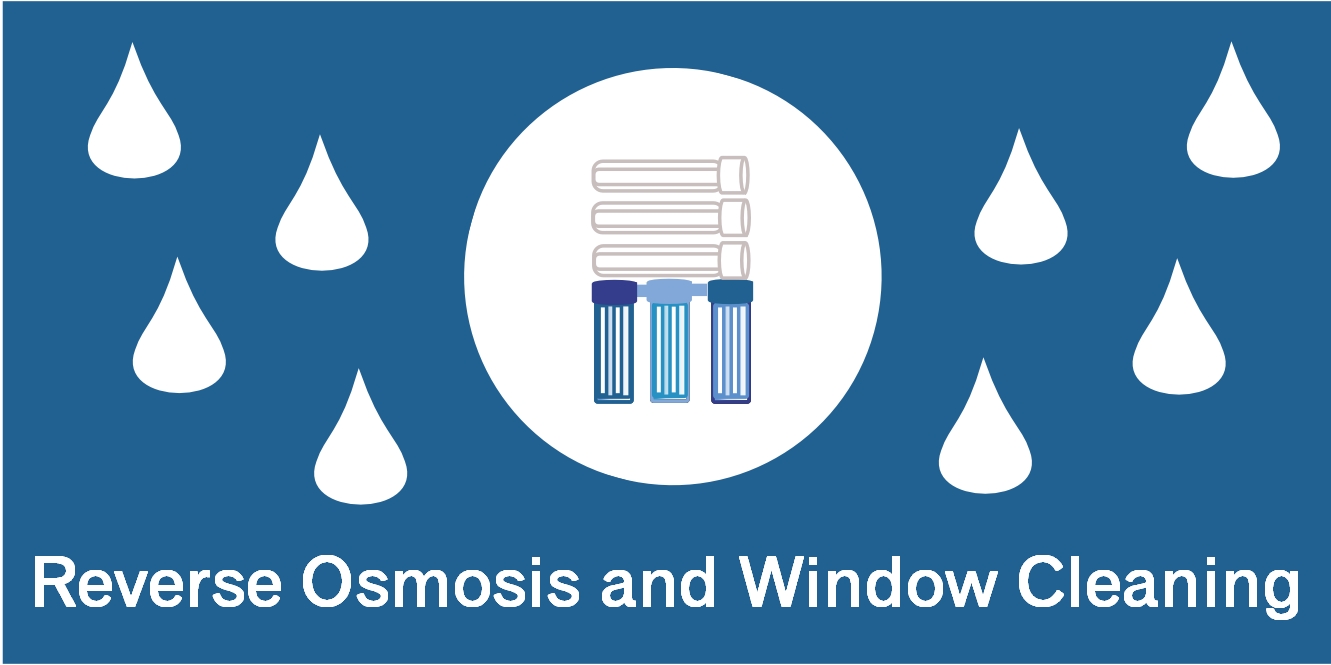
Most home owners will have a long list of never ending household chores to do around the house. If you have ever attempted to clean your own windows only to see streaks and water marks when the water dries you will understand how frustrating this can be! These unsightly stains are caused by impurities in the water, so no matter what detergent or cleaning product you use, when washed with ‘normal’ water these marks will follow. So what is the solution for this? How do professional window cleaners leave our windows with that show home finish? Reverse Osmosis technology.
How does Reverse Osmosis clean windows?
Professional window cleaners have been using Reverse Osmosis technology for many years. The three main stages of water purification in window cleaning are Water Softening, Reverse Osmosis and De-Ionisation.
Reverse Osmosis (RO) is the finest filtration available. It works by separating contaminants from water by forcing the water through a semi-permeable membrane. This membrane acts as a physical barrier and prevents impurities at a molecular level from passing through. This will produce pure water having filtered out 98% of unwanted molecules such as fluoride, lead, chlorine, chloramines, pesticides, nitrates, sulphates and much more. This enables windows to be cleaned with pure water, ensuring that no water impurities will leave streaks or water marks.
De-Ionising (DI) Resin is also a popular method in cleaning windows. DI is the polishing of the water using resin vessels. The water is passed through a DI resin vessel which will in turn polish the water, leaving pure water ready to be tanked and used. This DI resin technology is excellent in car washing and detailing also.
It is important to note that water softening is not always necessary for cleaning windows. However in areas with hard water, this can be beneficial. This process will remove the calcium and magnesium and replace it with sodium. If you have hard water, your TDS will read 350 or higher.
Either of these processes can be used alone or in combination together. We find that many window cleaning companies will use a combination of these methods to ensure a professional finish.
What are the stages of a RO window cleaning systems?
A typical Reverse Osmosis system used by window cleaners will involve purification through a 5 or 6 stage process. Our systems use a combination of filters and membranes to ensure that the water is of the highest and purest quality. Typically our systems including a spun sediment filter, carbon block filter and a chlorplus carbon filter on certain systems.
The first stage in our system is our spun sediment 5 micron filter. This is made from spun polypropylene with an extra high capacity. It will remove all remove sediments and particles such as dirt, sand, silt and rust. The second stage is the carbon block filter which is our high quality filter made from roasted coconut husk and comprised of activated carbon granules. This filter is ideal for chlorine reduction and the removal of particulates, microscopic cysts, heavy metals such as lead and any other contaminants.
Some of our systems will include a third pre-filter, Chlorplus. This filter utilizes advanced activated carbon technology which allows superior chloramine and chlorine reduction. It also minimizes petrochemical by-product dichloroacetonitrile, ethylene dibromide and insecticides. Chloramine carbon filters help reduce sediment while providing greater chloramine performance capacities than granular carbon.
Once the water has passed through the pre-filtration stage, the membrane will then be the next stage in the purification process. Reverse osmosis membranes are the heart of every reverse osmosis system and work by forcing water though a semi-permeable membrane to remove ions, molecules, and larger particles. The membrane will remove an average 97-99% of tap water contaminants. We only use high quality thin film composite reverse osmosis membranes in our systems.
We give our customers using our window cleaning systems the option to include a de-ionisation stage after the reverse osmosis has taken place. DI is a resin based water purification process removes all dissolved solids from the water. These resins attract non-water ions and replaces them with water ions. This will give a purer water form with a Total Dissolved Solids (TDS) reading of zero.
Summary
Reverse Osmosis systems are an excellent choice for professional window cleaner producing perfectly purer water through a series of filters and membranes. It is an effective way of removing any unwanted particles and impurities at a molecular level to ensure that windows are left at show home standard. Should you be interested in any of our window cleaning systems and would like any further information please do not hesitate to contact us on 01823 698813 or via email helpdesk@ro-man.com where our expert team will talk you through the systems and choices on offer.
